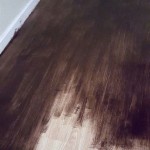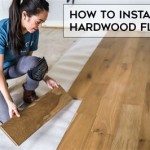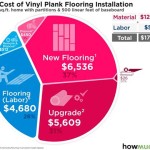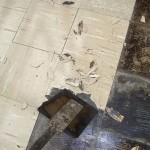Wide Wood Plank Flooring: A Comprehensive Guide
Wide wood plank flooring, characterized by individual boards significantly broader than traditional options, has risen in popularity as a design element that balances rustic appeal with contemporary sophistication. This flooring style offers a distinctive aesthetic and presents a range of considerations regarding material selection, installation, maintenance, and suitability for various interior spaces. This article seeks to provide a comprehensive overview of wide wood plank flooring, exploring its benefits, limitations, and practical implications for homeowners and design professionals.
Aesthetic Impact and Design Versatility
The defining feature of wide wood plank flooring is its visual impact. The increased width of each plank reduces the number of visible seams across the floor, creating a more expansive and uniform appearance. This can contribute to a feeling of spaciousness, particularly in smaller rooms, and allows the natural character of the wood grain to be more prominently displayed. The uninterrupted surface highlights the inherent beauty of the wood, including knots, variations in color, and grain patterns, which can add depth and texture to a room.
Wide planks lend themselves well to a variety of design styles. In rustic settings, they complement exposed beams, stone fireplaces, and other natural elements, reinforcing a sense of warmth and connection to the outdoors. In modern interiors, wide plank flooring can provide a grounding element, adding a touch of organic texture to minimalist spaces. The versatility of wide plank flooring extends to color choices as well. Light-toned planks can brighten a room and create a more airy feel, while darker shades can add richness and drama. The finish applied to the wood—whether matte, satin, or gloss—further influences the overall aesthetic.
Furthermore, the length of the planks also plays a crucial role in the overall design. Longer planks, when combined with the increased width, minimize seams and create a more continuous visual flow across the floor. This effect is especially pronounced in larger rooms, where shorter planks might appear choppy or fragmented. The combination of width and length in wide wood plank flooring contributes significantly to the perceived quality and luxury of the space.
Material Considerations and Performance Characteristics
Wide wood plank flooring is available in a wide range of wood species, each with distinct characteristics in terms of durability, grain pattern, color, and cost. Hardwood species such as oak, maple, hickory, and walnut are popular choices due to their strength and resistance to wear and tear. Each species offers a unique aesthetic, with oak known for its prominent grain and versatility, maple for its light color and smooth texture, hickory for its exceptional hardness, and walnut for its rich, dark tones.
Beyond the specific species, the construction of the plank itself is also a critical factor. Solid wood planks are made from a single piece of wood, offering a classic look and the potential for refinishing multiple times over their lifespan. However, solid wood is more susceptible to expansion and contraction due to changes in humidity, which can lead to gapping or warping, especially in wider planks. Engineered wood planks, on the other hand, consist of a thin layer of hardwood veneer bonded to a core of plywood or high-density fiberboard. Engineered wood is more dimensionally stable than solid wood, making it less prone to movement due to moisture fluctuations. This makes it a suitable choice for areas with higher humidity levels or for installation over concrete slabs.
The thickness of the hardwood veneer in engineered wood planks is another important consideration. A thicker veneer allows for more refinishing opportunities, extending the lifespan of the floor. However, thicker veneers generally come at a higher cost. The core material also influences the stability and durability of engineered wood flooring. High-quality plywood cores offer excellent moisture resistance and structural integrity, while lower-density fiberboard cores may be more susceptible to damage from water exposure.
The performance characteristics of wide wood plank flooring are influenced by both the wood species and the finish applied. Harder wood species are more resistant to scratches and dents, making them a better choice for high-traffic areas. The finish provides an additional layer of protection, guarding against wear, stains, and moisture. Polyurethane finishes are durable and water-resistant, while penetrating oil finishes offer a more natural look and feel but require more frequent maintenance. The choice of finish should be based on the expected level of traffic and use, as well as the desired aesthetic.
Installation, Maintenance, and Cost Implications
The installation of wide wood plank flooring requires careful planning and attention to detail. Proper subfloor preparation is essential to ensure a level and stable surface for the planks. Uneven subfloors can lead to uneven flooring, squeaking, and potential damage to the planks over time. In many cases, leveling compounds or additional layers of plywood may be necessary to correct subfloor imperfections.
The installation method depends on the type of plank and the subfloor material. Solid wood planks are typically nailed or glued down to the subfloor, while engineered wood planks can be nailed, glued, or floated. Floating installations involve interlocking the planks together without attaching them directly to the subfloor, which allows for some movement and expansion. This method is often used over concrete slabs or in situations where nailing or gluing is not feasible.
Proper acclimation of the wood planks to the environment is crucial before installation. This involves allowing the planks to sit in the room for several days prior to installation, allowing them to adjust to the temperature and humidity levels. Failure to acclimate the planks can result in excessive expansion or contraction after installation, leading to gaps or buckling. Maintaining consistent humidity levels in the home after installation is also important to minimize movement in the wood.
Maintaining wide wood plank flooring involves regular cleaning and occasional refinishing. Sweeping or vacuuming regularly removes dirt and debris that can scratch the finish. Damp mopping with a wood floor cleaner can help remove stains and maintain the luster of the floor. Avoid using abrasive cleaners or excessive water, as these can damage the finish. Refinishing may be necessary every few years, depending on the level of traffic and wear. Refinishing involves sanding down the existing finish and applying a new coat, restoring the floor to its original condition.
The cost of wide wood plank flooring can vary significantly depending on the wood species, plank construction, and installation method. Hardwood species such as walnut and exotic woods tend to be more expensive than oak or maple. Solid wood planks are typically more expensive than engineered wood planks, although the cost of engineered wood can increase with thicker veneers. Installation costs can also vary depending on the complexity of the job and the labor rates in the area. While the initial investment in wide wood plank flooring may be higher than other flooring options, its durability, longevity, and aesthetic appeal can make it a worthwhile investment in the long run.
In summary, wide wood plank flooring offers a visually striking and versatile flooring option that can enhance the beauty and value of a home. Careful consideration of material selection, installation, and maintenance is essential to ensure the longevity and performance of the floor. By understanding the benefits and limitations of wide wood plank flooring, homeowners and design professionals can make informed decisions that align with their aesthetic preferences, budget constraints, and lifestyle needs.

Wide Plank Hardwood Floors That Won T Break The Bank

Exquisitely Finished Wide Plank Flooring By William Henry

The Ultimate Guide To Wide Plank Flooring Mayriver

Wide Plank Hardwood Flooring Everything You Need To Know Chestnut

Wide Plank Hardwood Flooring New Reclaimed

The Ultimate Guide To Wide Plank Flooring Mayriver

Trending The Extra Wide Long Plank

Designing With Lighter Toned Wide Plank Wood Flooring

Wide Plank Red Oak Hardwood Flooring Vermont

Trending Now Long Wide Wood Plank Flooring Slaughterbeck Floors Inc
Related Posts








